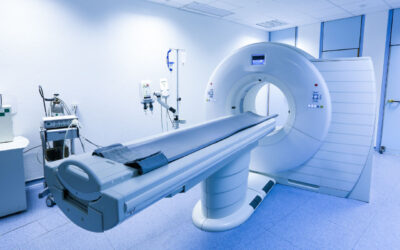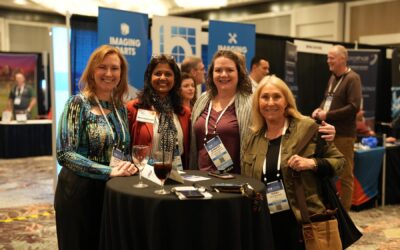By Matt Skoufalos
As in so many aspects of American life, the passing of the Baby Boomer generation will have an outsized impact in the field of health care technology. As its population continues to age, the demands the boomers will place on the health care industry and its resources will continue to increase at an outsized rate as well.
In a 2014 article published by the Association for Medical Imaging Management (AHRA), Carole South-Winter points out that the national population of seniors (aged 65 and older) will increase 50 percent by 2020, requiring more imaging professionals to handle the added demand.
“Persons 65 and older utilize imaging services approximately twice as often as persons between the age of 45 and 64, and more than three times as much as persons ages 20-44,” South-Winter notes. “This demographic shift combined with the number of aging professionals in allied health, who are expected to retire at a faster rate than new technologists entering the field, will result in major staffing shortages. … The vacancies in the workforce will be vast.”
In the face of this generational change, finding, training, and installing the next crop of qualified imaging service professionals is one of the foremost concerns.
Todd Minnigh and Steven Kralles work in Carestream Health’s Global Customer Care Organization. Minnigh is its global service sales director, while Kralles is director of global field service. Both say they’ve seen the writing on the wall for some time as relates to the advanced aging of the service technician base of the business. Kralles describes “an extremely high percentage of our team” as being older than 60, and another, significant portion are in their fifties. He described the changing demographics as “a major issue for us.”
“It’s a number that’s never gone away, and we’ve tried a number of different strategies,” Kralles said.
Companies that lose industry veterans either look to woo them away from competitors or find comparably skilled replacements from a parallel field, Kralles said. But with the number of qualified technicians spread across a variety of places of employment, those tactics haven’t restocked the talent pool, only reshuffled the proverbial deck chairs around it.
Compounding the problem is what Kralles described as “a steep increase” among biomedical technician teams at hospitals that number among his major customers. As those institutions continue to draw from among a limited field of qualified technicians, it presents another competing option against which employers find themselves struggling to make strides.
“The pull into these [hospital] biomed positions is a nice job for someone as they get up in years,” Kralles said.
As an alternative, Kralles said Carestream began seeking younger candidates wherever possible, trying to draw from the military, biomedical and technical colleges, and industries that required electromechanical skill sets. In doing so, he said the company has expanded its view of what a potential candidate might be.
“We hire a lot of different people from a lot of different angles,” Minnigh said. “Sometimes they’re coming from school, sometimes they’re coming from another industry, and sometimes they’re from a competitor. We’ve had a couple people who didn’t come up through the typical channels, and they had the right skills.”
“We’re looking for a base of technical experience in many different areas; people who’ve had discipline in a lot of environments,” Kralles said. “Somebody who’s passionate about the customer is going to get our attention in the hiring process.”
Along with finding the right candidates, Carestream has intensified its training processes to devote additional resources to bringing its service technicians up to speed on its equipment, processes and company culture. Kralles said its service technicians don’t go into the field on their own until after at least a year of technical education at its Rochester headquarters, where they “spend quite a bit of time, product by product,” before going into the field with an experienced engineer. Older, more experienced engineers oversee their newer counterparts to help them build consistency at their work. Furthermore, field engineers are also partnered with members of the sales team, the better to educate them on how to cultivate deeper client relationships.
“Learning never ends in these jobs,” he said. “Even the individuals who’ve been at this for 30 years still come into Rochester for training on an annual basis. It’s bigger than just being a technical guy out there on your own. I think it helps people be more attached to the company and stay here as a career point.”
Competitive salaries and benefits comprise only one aspect of what’s needed to retain that top-tier talent; in a market with wage pressures, opportunities for lateral mobility are abundant. In response, Minnigh said employers like Carestream have needed to find additional ways to invest in their workers. Beyond the extensive continuous training program, its employee development process invites staffers to consult with their managers to outline a plan for their future and to identify pragmatic steps they could take to achieve it.
“People tend to stay for many years,” Minnigh said. “We let people grow into management jobs, and some of them have gone into sales jobs. People become experts on these products. It takes a long time to acquire that, and you know that if you were to change horses you’d have to start all over again.”
In addition to recruitment, retention, and training, Carestream devotes resources to helping older staffers mentor their younger counterparts ahead of retirement. By using mentorship to bring the new hires up to speed, the company is working to insulate itself against the generational brain drain that comes from losing older, veteran staffers. Kralles said Carestream has invested in the creation of knowledge databases that help retain that information for future use.
“We don’t have knowledge that is only trapped in these individuals, but the biggest thing we lose is their experience in these particular customer locations, and the broadness of things that have happened,” Kralles said. “I talk to my managers more than anything else about maintaining and recruiting individuals for the team. Getting people in ahead of retirements so we can have them learn from the people who are going out has been very important to our success.”
“When you see somebody who’s about to retire, you know that day is coming,” Minnigh said. “You can start to prepare other people, queue up folks, and get them the same kind of exposure that that person has.”
Gavin Barton, managing director of The Leonard-Barton Group of Boston, Massachusetts, said the mass retirements of boomer-aged workers in many fields results in the forfeiture of what his group calls “deep smarts,” the business-critical, experience-based knowledge that experts accrue over decades of working in any field. Deep smarts involve skills based around decision-making and systematic thinking, and are different from book knowledge, Barton said.
“When it comes to how to get things done, how to move through an organization, there’s a lot there when people walk out the door that walks out the door with them,” he said.
The Leonard-Barton group has analyzed labor trends in public utilities, aviation, energy, and engineering, among others; all fields in which a lot of technical learning it transmitted digitally, even in the design processes. As efficient as such models of skill transmission are, they can fall apart at the implementation stage, Barton said, because they don’t turn on the greater sense of context that veterancy affords.
“The way the pieces fit together, how certain materials work with other materials; that kind of stuff you don’t get together until you get your hands on it,” he said. “That kind of tacit field knowledge isn’t as prevalent when people come into a field industry. These aren’t always the sexiest jobs, but people have such extreme knowledge of how these systems work over time.”
Beyond their deep-smarts knowledge, veterans in any line of work benefit from “know-who,” Barton said – that is, the social capital they build up over years, and which isn’t immediately transferrable to a replacement. To that end, Barton said companies in transition don’t just need to acquire the Rolodexes of employees who are leaving, but a deeper list of to whom they go for answers.
“If you look at it as a process, what’s the business-critical stuff that we keep, who’s got it, and what are the steps to transfer that,” he said. “What we’ve seen has been very successful is experts doing classes on certain situations. The expert will say, ‘Here’s the situation, how would you handle it?’ Then they come up with their options and say, ‘This is what we did,’ and discuss it, figure it out, and pass that along.”
When it’s time for an employee to ride off into the sunset, Barton suggests it’s better to incorporate the individual’s retirement into as much of a long-range plan as possible to allow for the passage of their knowledge to those who are next in line for the job. By bringing along subordinates to shadow their predecessors for as long as possible, clients will become more comfortable with that hand-off, Barton said; his phrase for that process is “accelerated apprenticeship,” which can be the mechanism for transferring “tacit, business-critical knowledge” within as few as six months to a year.
“There are a number of people who are already excellent mentors, and are very open and willing to share,” Barton said. “Then you have the other side that are keeping everything close to the vest [because] knowledge is power. Most of the experts we’ve run into are very willing to share what they know with the next person that’s up and coming, especially if they’re not being forced out. The more face time you can get between people, we think it’s much more effective.”
Losing the knowledge of prior generations can stymie an organization that would otherwise be poised for growth, or set one that’s stable back a number of years; he pointed to one client that was poised to lose a collective 27,000 years of knowledge within the next five years due to retirements. The generational brain drain can also hamstring a company that needs the help to continue to innovate. Barton likened the quality of the information lost in such circumstances as the difference between knowing how to Google the answer to a problem and possessing the deep personal knowledge of how to resolve it.
“What do you want to do to keep your business thriving and growing?” Barton said. “A lot of innovation comes off some of that past knowledge as well. It doesn’t happen in a vacuum. You need to take a long view of this because you can’t pass everybody on the open market. We’ve got to figure out what it is we’re going to need, and who’s got it.”
Tim Stephens, executive recruiter and vice-president of operations at Stephens International Recruiting, said medical equipment repair and service suffers from being “an older field” that isn’t well-known outside of the health care space. Typically, as high-schoolers’ career choices are shaped, they’re exposed to electrical or mechanical engineering degree programs, or paths in process or product development, not the kind of “break-fix” work of an imaging service technician, Stephens said.
“It’s not as well known, which is one of the reasons for the shortage,” he said; “and there’s not as many schools as there used to be [offering] training at the associate’s [degree] level.”
As a result, Stephens foresees greater entry into the profession from peripheral careers. In addition to its staple reserves of ex-military biomeds, he thinks the field may get a boost from hospitals that could cross-train professionals from other specialties, most likely information technology (IT), or shift some technicians who have familiarity with patients in a clinical environment. He said he’s also found that many companies are willing to invest in retraining technicians to specialize in medical imaging equipment service. With more high-quality positions available than there are qualified candidates, companies with a roster of stable talent don’t want their staffers “to get poached or discouraged, or look at other jobs out there,” Stephens said.
“If you’re willing to move, then you can definitely punch your ticket,” he said. “Talking to these engineers, their wage scale goes up and they know their value. If you can train your employees, they’ll be a little more prone to sticking around knowing they’re on the same team and in it together. Some programs have a nice capital budget for training, and a lot of times those people are the most loyal.”
For those technicians whose resumes aren’t yet fully padded out, Stephens recommends continuing education as a starting point. Among those certifications that should be more commonly available, he suggests attaining A+ and Net+ “to position yourself for the next great job.” Seeking imaging-specific training may require a greater out-of-pocket investment, either for tuition, or for the travel and boarding costs to attend a training center.
“I know some folks want to get into radiology but there’s not many schools around that have an imaging program,” he said. “It might behoove you to pay out of pocket to go to that training.”








